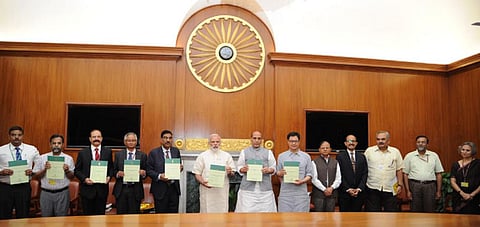

India’s first disaster management plan in history hopes to “make India disaster resilient, achieve substantial disaster risk reduction and significantly decrease the loss of life, livelihoods and assets.” The plan was released by Prime Minister Narendra Modi on June 1, 2016.
Prepared by the National Disaster Management Authority, the plan spells out the roles of all tiers of the government, including panchayats and urban local bodies. It identifies crucial parts of disaster management such as early warning, information dissemination, medical care, fuel, transportation, search and rescue, evacuation, among others.
The plan is in tandem with the four primary themes of the United Nation’s Sendai framework—understanding disaster risk, managing risk by strengthening governance, investing in disaster risk reduction for resilience and enhancing disaster preparedness. The Sendai Framework 2015-30 is a non-binding agreement endorsed by the UN General Assembly after the World Conference on Disaster Risk Reduction.
The plan ensures that all phases of disaster management—preparedness, mitigation, response and recovery—are covered by a horizontal and vertical integration among all agencies and departments of the government.
The NDMA seeks to improve the plan periodically by keeping up with the knowledge base and global practices in disaster management.